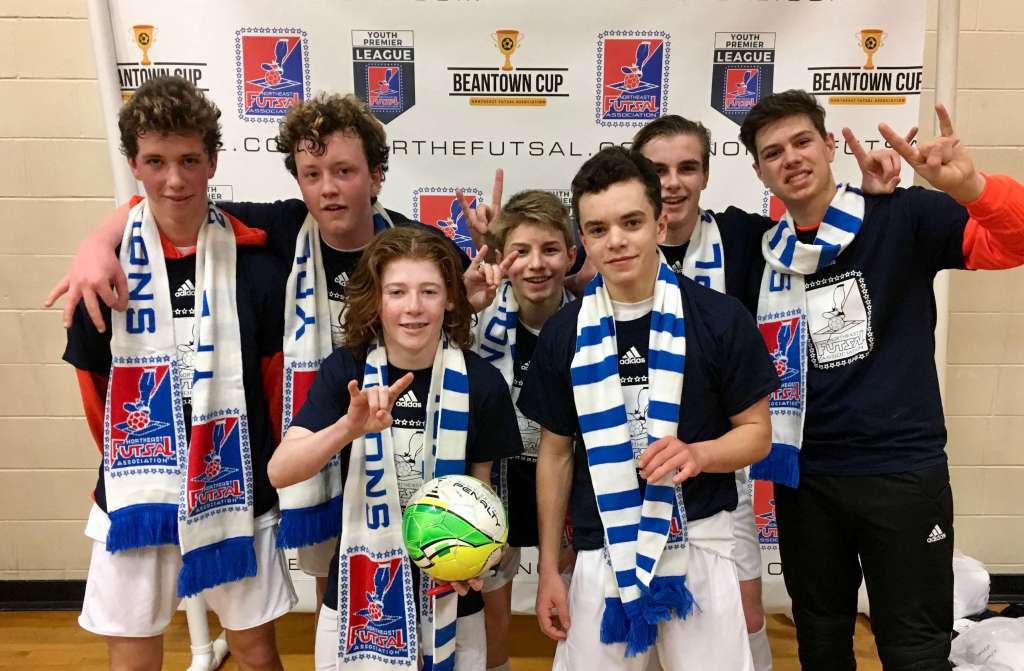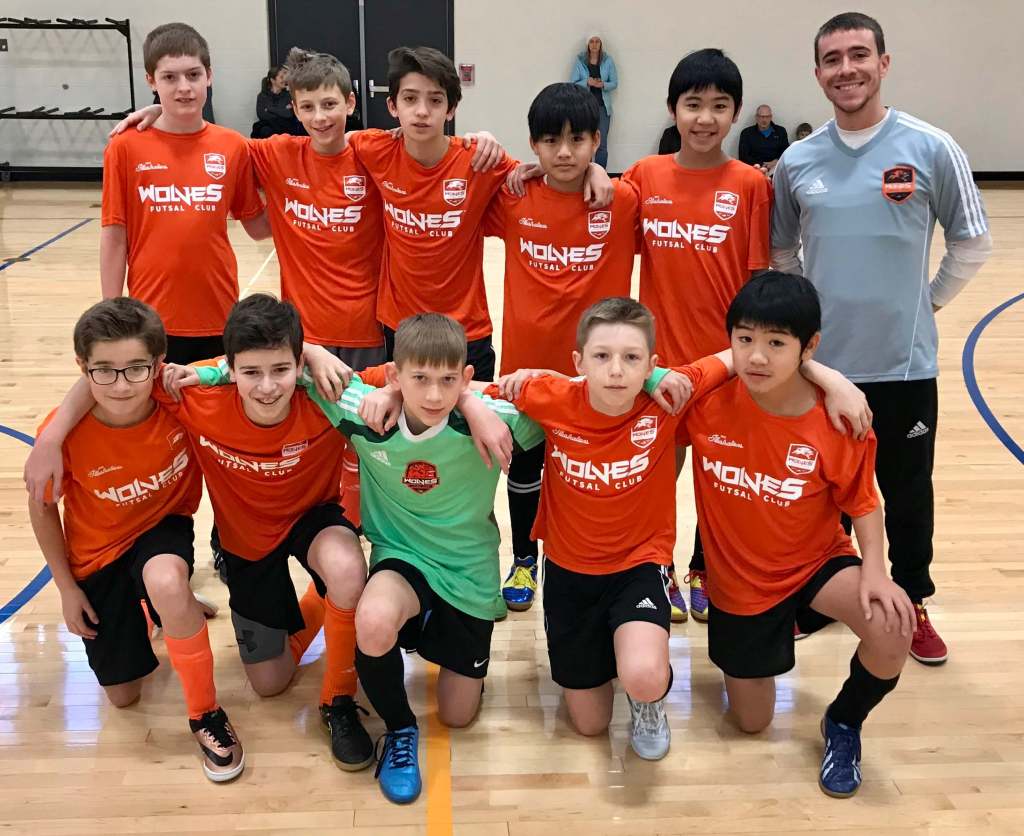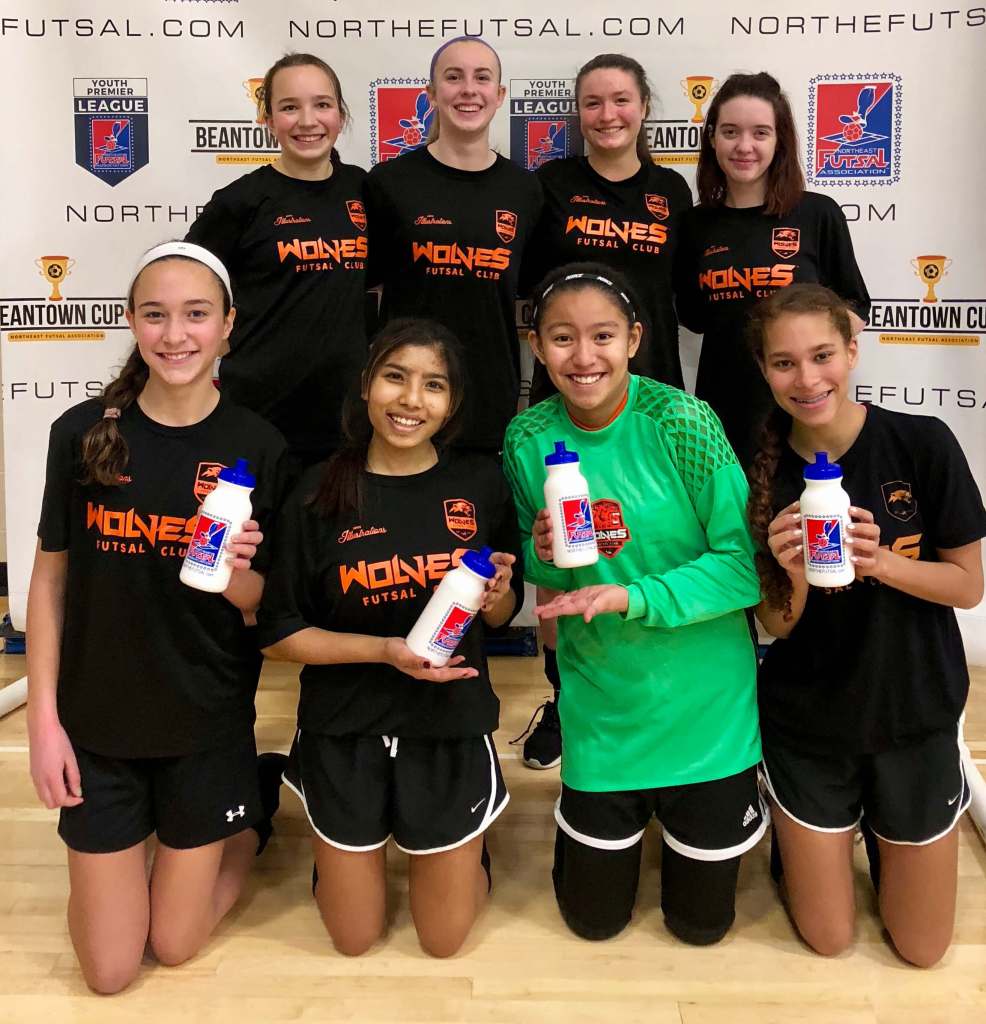Playeasy Sport of the Week: Futsal
About Futsal
Futsal is a fast-paced, smaller-scale form of soccer played indoors. The 5×5 game is played on a hard court floor smaller than a typical soccer field with a lower-bounce, denser ball than soccer. “The purpose of that is so the ball doesn’t fly all over the place. It stays on the ground and is designed to be that way,” Zach Rocha, Executive Director of Sidekick Sports Academy says. Rather than cushioning the ball when receiving it, in futsal, players step on the ball to stop it. With little space for dribbling or navigating the ball around opponents, the game is quick, precise and incredible for skill-building.

The Northeast Futsal Association
In 2012, Zach Rocha began Sidekick Sports Academy out of Boston, MA, a youth sports and community development organization offering on and off court sports programming for all ages. With the cold Boston winters, Rocha was looking for a new indoor sport to offer. “We stumbled into the sport of futsal. I have a basketball background and my next closest sport is soccer. We were soccer coaches looking to fill the void in the winter and timed it well with a burst in futsal popularity. Fast forward a few years later and we started Northeast Futsal Association in 2017 to offer a higher-level club league in Massachusetts,” Rocha shares.
The Northeast Futsal Association quickly grew, hosting some of the biggest tournaments in the country with over 200 teams in a weekend. “We found a need and a niche market and tried to fill the void as best we could. We ran leagues with over 150 teams and ran tournaments in one weekend with over 200 teams. They were all successful in terms of operation and how we ran them,” Rocha continues.

Tips from the Experts
We chatted all things futsal with Zach Rocha to learn more about the sport and how to best organize and host tournaments.
- What is the most common age group?
- Rocha: The golden age of youth sports is 9-12. That is the biggest age of development.
- How does futsal relate to soccer?
- Rocha: Futsal is many ways the secret to success in soccer. Futsal requires you to think faster and act faster. Soccer is more of a distance and endurance sport, where there are quick bursts speed, but for the most part you are jogging to set up opportunities. In futsal, you are sprinting the entire time. It forces you to develop foot skills and quick reaction skills. Many clubs use futsal as an extension of the outdoor fall and spring seasons, so the outdoor players are better when they go back to soccer. That is where futsal fits in the want and need.
- Do you have any recommendations for running a futsal tournament?
- Rocha: At the youth level, it is often 24-minutes of running time per half, plus time outs and half time, it ends up being 1 hour and 5 minutes. For the next match there is no warm up, and each match runs 5 minutes behind. We opted for 2 22-minute halves, which is now 44 minutes. That would be one of my suggestions for tournament organizers – run 2 22-minute halves. Something as simple as that makes a big difference to run smoothly.
- What is the typical tournament season?
- Rocha: The big tournaments which you would build your schedule around are in January and February. You really are for the most part filling the gap between soccer’s traditional season in spring and fall. Futsal is not a replacement for soccer, futsal is an addition to soccer. For us, we would run from Thanksgiving to St. Patrick’s Day.

What Does Futsal Need from Hosts?
“Small things matter when it comes to futsal venues,” Rocha notes. On the court itself, groups may need to temporarily mark the goalkeeper arc with painters tape. Equipment wise, electronic scoreboards are important, whether tabletop or the boards on the wall. Scoreboard operators are beneficial as well. Of course, goals are also a necessity, as well as dividers between courts and the option of netting behind the courts to catch the ball. Some tournaments can bring up to 200 teams in a weekend. Ideally, if you can run a tournament under one roof and don’t have to go to multiple facilities, that is best.

Growing the Sport & Getting Involved
Northeast Futsal Association’s website is a great place to go to understand the game. Those interested in getting started playing can reach out to Northeast Futsal Association. Rocha sees lots of momentum for the sport going forward, especially with the World Cup coming to the US in 2026. “I think futsal is incredibly valuable and beneficial as a teaching tool. We have players playing professionally in the states and overseas and we have some D1 college starters at Georgetown and other schools who have come through our system. I have every belief that futsal was one of the key reasons, if not the key reason that they were better at soccer and they developed to that level. I really do think it’s a secret formula,” Rocha shares.

Follow the Northeast Futsal Association
To learn more about the Northeast Futsal Association and follow them on Playeasy, head to their Playeasy profile here.
The Northeast Futsal Association on Social Media



